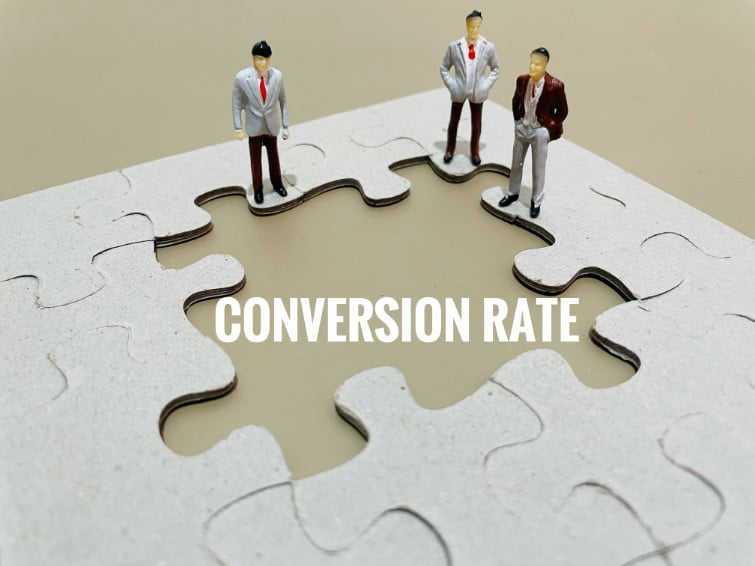In the world of digital marketing, driving traffic to your website is only the first step. The ultimate goal is to turn those visitors into paying customers. This is where Conversion Rate Optimisation (CRO) comes into play. CRO is the process of fine-tuning your website and marketing efforts to maximise the percentage of visitors who take a desired action, such as making a purchase or signing up for a newsletter. In this comprehensive guide, we will explore the ins and outs of CRO, including strategies, best practices, and tools to help you boost your conversion rates.
Understanding Conversion Rate Optimisation
Before diving into the nitty-gritty details of CRO, it’s essential to understand the fundamental concept. Conversion rate is a metric that tells you the percentage of visitors who complete a specific action on your website. This action can be anything from making a purchase to filling out a contact form or subscribing to your blog.
CRO focuses on increasing this conversion rate by improving the user experience and the effectiveness of your website. It’s all about reducing friction and obstacles that may prevent visitors from taking the desired action.
The Importance of CRO
Why is CRO so critical in digital marketing? Simply put, it directly impacts your bottom line. Instead of investing more money to attract new traffic through advertising, CRO allows you to make the most of your existing traffic. Here are some compelling reasons why CRO should be a top priority for any online business:
1. Cost-Effective
CRO is often more cost-effective than acquiring new traffic through advertising. It’s about optimising what you already have, which can lead to a higher return on investment (ROI).
2. Improved User Experience
A focus on CRO results in a better user experience, which can lead to higher customer satisfaction and loyalty. Satisfied customers are more likely to return and refer others to your site.
3. Competitive Advantage
In a crowded online marketplace, a well-optimised website can give you a competitive edge. If your website is more user-friendly and converts better than your competitors, you’re more likely to capture the market share.
4. Data-Driven Decision Making
CRO relies heavily on data and analytics. By analysing user behaviour, you can make informed decisions and continually improve your website and marketing efforts.
The CRO Process
CRO is not a one-time task but an ongoing process. It involves several steps and continuous optimisation. Let’s break down the CRO process into manageable phases:
1. Data Collection and Analysis
The first step in CRO is to gather data about your website’s performance. This includes understanding where your visitors come from, how they navigate your site, and where they drop off. Google Analytics and other analytics tools are invaluable for this purpose.
2. Setting Clear Goals
Identify the key actions you want visitors to take on your website. This might be making a purchase, signing up for a newsletter, or filling out a contact form. These goals should be specific, measurable, and realistic.
3. Identifying Barriers
Analyse your website and identify any obstacles that might prevent visitors from taking the desired actions. This can include slow loading times, confusing navigation, or unclear call-to-action buttons.
4. A/B Testing
A/B testing involves creating two versions of a webpage with slight differences and showing them to different sets of visitors. By comparing the performance of these versions, you can determine which one is more effective in achieving your goals.
5. Implementing Changes
Once you’ve identified areas for improvement through A/B testing, make the necessary changes to your website. This could involve altering the design, rephrasing call-to-action text, or streamlining the checkout process.
6. Monitoring and Iteration
Continuously monitor the impact of your changes and make further adjustments as needed. CRO is an ongoing process that requires constant refinement.
CRO Strategies and Best Practices
To effectively optimise your website’s conversion rate, consider the following strategies and best practices:
1. Create Compelling Call-to-Actions (CTAs)
Your CTAs should be clear, action-oriented, and placed prominently on your website. Use persuasive language that encourages visitors to take the desired action.
2. Improve Website Loading Speed
Slow-loading websites can deter visitors. Compress images, leverage browser caching, and consider using Content Delivery Networks (CDNs) to enhance loading times.
3. Enhance Mobile Responsiveness
As more people browse the web on mobile devices, it’s essential to have a mobile-responsive website. Ensure that your site looks and functions well on various screen sizes.
4. Simplify Forms
If your goal is to collect user information through forms, keep them as short and straightforward as possible. Every additional field can deter potential leads.
5. Leverage Social Proof
Display reviews, testimonials, and trust symbols on your site to build trust and credibility with your visitors.
6. Implement Exit-Intent Popups
Exit-intent popups can capture visitors’ attention just before they leave your site. Use them to offer discounts, content, or incentives in exchange for their contact information.
7. Use Retargeting
Implement retargeting ads to reach out to visitors who’ve interacted with your site but didn’t convert. This can help re-engage them and bring them back to complete the desired action.
8. Test Different Headlines and Content
The language you use on your website can significantly impact conversion rates. A/B test different headlines, product descriptions, and content to see what resonates best with your audience.
9. Offer a Guarantee
Providing a satisfaction guarantee or a return policy can reduce the perceived risk for customers, making them more likely to make a purchase.
10. Implement Chatbots
Chatbots can provide immediate assistance to visitors, answer questions, and guide them through the conversion process.
Tools for CRO
Numerous tools can help you implement and monitor your CRO efforts effectively. Here are some popular ones:
- Google Analytics: For tracking user behaviour and website performance.
- Optimizely: A popular A/B testing tool.
- Hotjar: Provides heatmaps, session recordings, and surveys to understand user behaviour.
- Crazy Egg: Offers heatmaps, scroll maps, and A/B testing.
- Unbounce: A landing page builder with A/B testing capabilities.
- Convert: A full-featured CRO platform for A/B testing, multivariate testing, and personalisation.
Measuring CRO Success
To gauge the success of your CRO efforts, monitor key metrics like conversion rate, bounce rate, and average session duration. Additionally, track your revenue, leads, or other specific conversion goals to see how they improve over time.
Remember that CRO is an ongoing process, and it’s crucial to continue testing, analysing, and making adjustments based on the data you collect.
Conclusion
Conversion Rate Optimisation is a vital component of digital marketing that can significantly impact the success of your online business. By continually improving the user experience and optimising your website, you can turn a higher percentage of visitors into customers, resulting in increased revenue and growth. Remember to collect and analyse data, set clear goals, and employ best practices consistently to boost your conversion rates.
For further assistance with implementing Conversion Rate Optimisation for your website, contact us at Firth Web Works. We’re here to help you turn more visitors into satisfied customers.

